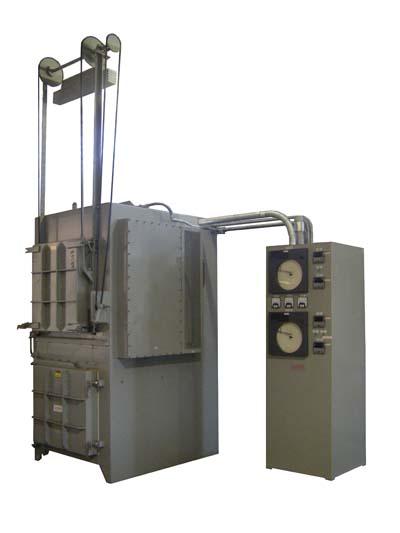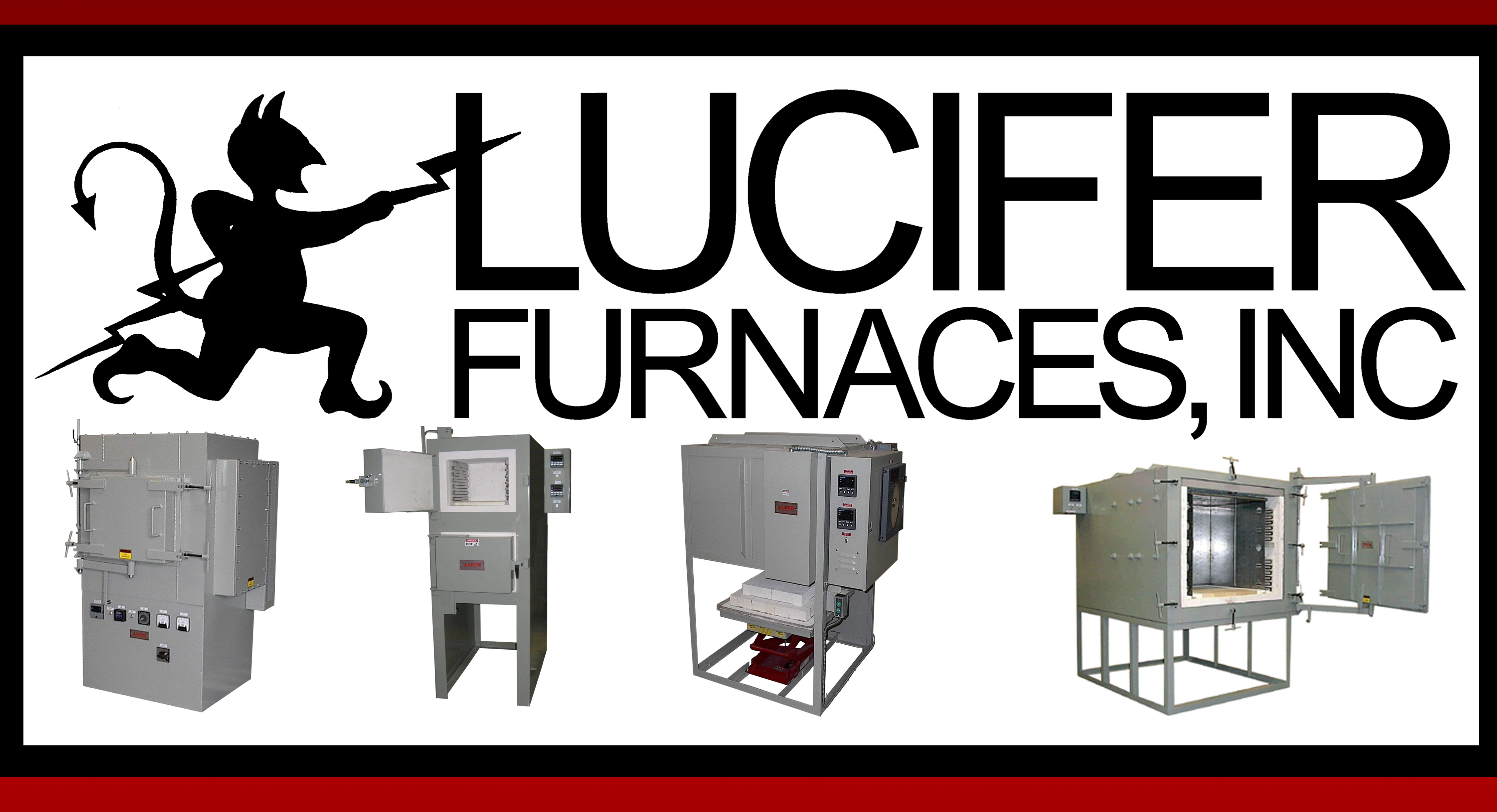
Lucifer Furnaces recently delivered a model HS84GT-R24dual chamber heat treating furnace for use with inert atmosphere to Standard Alloys, Port Arthur, Texas. The unit will be used on a daily basis in the foundry and machine shop department which repairs pumps, compressors and other equipment for the refining and chemical industries. Materials to be heat treated include but are not limited to Stainless Steels and High Nickel Alloy castings.
The HSGT upper hardening chamber is designed for a positive flow of inert atmosphere, with continuous welds and gasketed door, roof plate and element terminals. Seven inches of dry-fit multilayered lightweight insulating firebrick and mineral wool block insulation provide energy efficient operation and low outside shell temperature. Silicon carbide elements mounted across the roof and below the silicon carbide hearth plate produce heat to 2450°F.
An SCR power supply automatically adjusts voltage to the heating elements as resistance increases, providing a steady, low amperage and voltage supply for longer element life. An SCR power supply eliminates the manual adjustment of tap switches and power transformer as well as the costly method of on/off control which reduced element life.
A counter-weighted vertical lift manually hand cranked door keeps the hot face away from the operator at all times. The HSGT lower tempering chamber heats to 1400°F with a rear mounted fan assembly providing circulation for uniform heat. A stainless steel liner forms the work area, directing air past the side wall mounted elements for heating then past the workload. The standard horizontal swing door is equipped with a cam latch and safety microswitch.
Each chamber has working dimensions of 24" H x 24" W x 24" L and is operated independently with Honeywell digital time proportioning temperature controllers housed in a separate freestanding NEMA 1 control panel. An overtemperature safety system for both the hardening and tempering chambers meets OSHA requirements for unattended furnace operation. Optional equipment on the furnace to Standard Alloys includes chart recorders as part of ISO9001 compliance.
Contact Details
Related Glossary Terms
- alloys
alloys
Substances having metallic properties and being composed of two or more chemical elements of which at least one is a metal.
- computer-aided manufacturing ( CAM)
computer-aided manufacturing ( CAM)
Use of computers to control machining and manufacturing processes.
- hardening
hardening
Process of increasing the surface hardness of a part. It is accomplished by heating a piece of steel to a temperature within or above its critical range and then cooling (or quenching) it rapidly. In any heat-treatment operation, the rate of heating is important. Heat flows from the exterior to the interior of steel at a definite rate. If the steel is heated too quickly, the outside becomes hotter than the inside and the desired uniform structure cannot be obtained. If a piece is irregular in shape, a slow heating rate is essential to prevent warping and cracking. The heavier the section, the longer the heating time must be to achieve uniform results. Even after the correct temperature has been reached, the piece should be held at the temperature for a sufficient period of time to permit its thickest section to attain a uniform temperature. See workhardening.
- payload ( workload)
payload ( workload)
Maximum load that the robot can handle safely.
- stainless steels
stainless steels
Stainless steels possess high strength, heat resistance, excellent workability and erosion resistance. Four general classes have been developed to cover a range of mechanical and physical properties for particular applications. The four classes are: the austenitic types of the chromium-nickel-manganese 200 series and the chromium-nickel 300 series; the martensitic types of the chromium, hardenable 400 series; the chromium, nonhardenable 400-series ferritic types; and the precipitation-hardening type of chromium-nickel alloys with additional elements that are hardenable by solution treating and aging.
- tap
tap
Cylindrical tool that cuts internal threads and has flutes to remove chips and carry tapping fluid to the point of cut. Normally used on a drill press or tapping machine but also may be operated manually. See tapping.
- tempering
tempering
1. In heat-treatment, reheating hardened steel or hardened cast iron to a given temperature below the eutectoid temperature to decrease hardness and increase toughness. The process also is sometimes applied to normalized steel. 2. In nonferrous alloys and in some ferrous alloys (steels that cannot be hardened by heat-treatment), the hardness and strength produced by mechanical or thermal treatment, or both, and characterized by a certain structure, mechanical properties or reduction in area during cold working.

